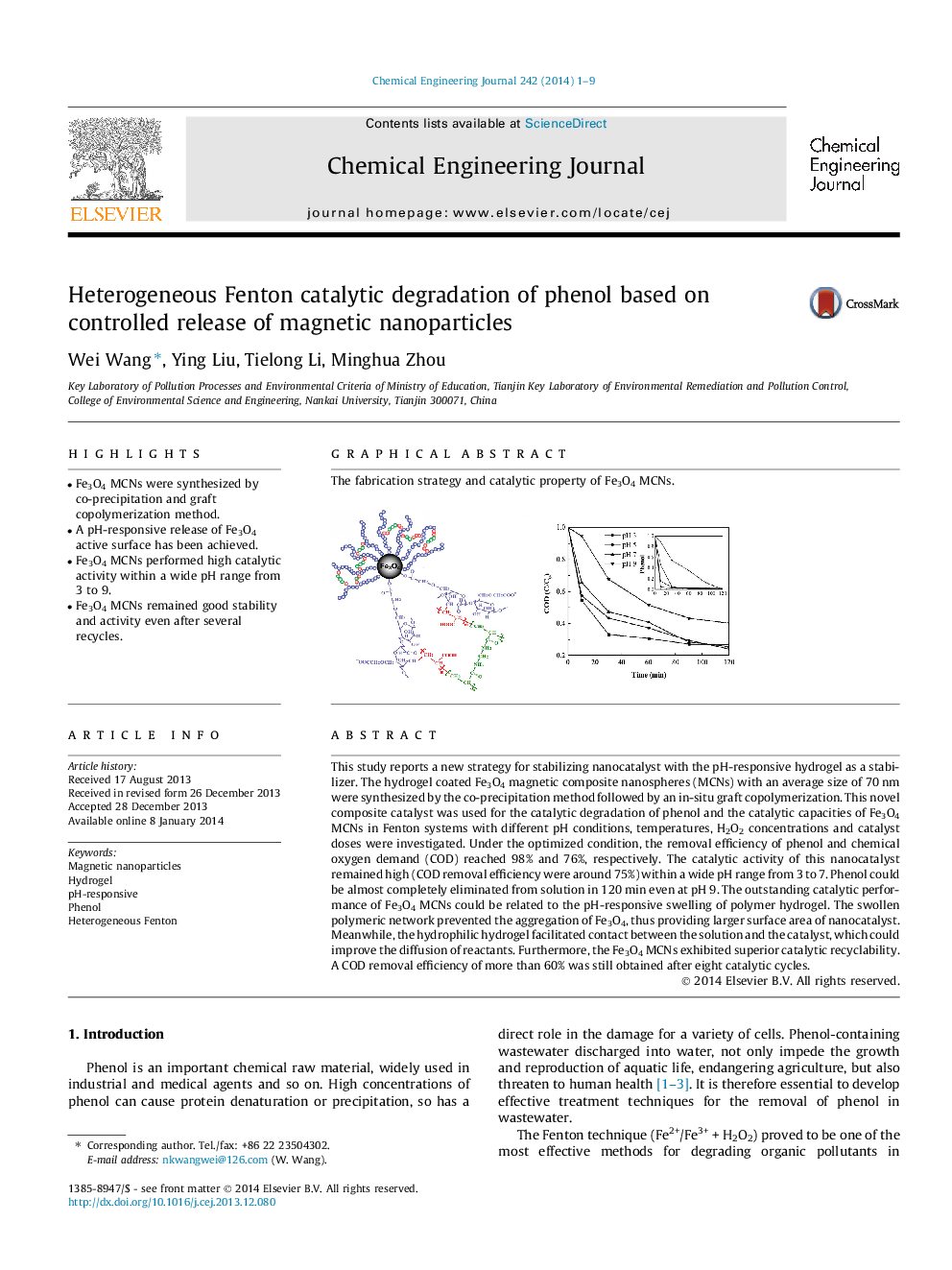| کد مقاله | کد نشریه | سال انتشار | مقاله انگلیسی | نسخه تمام متن |
|---|---|---|---|---|
| 147619 | 456397 | 2014 | 9 صفحه PDF | دانلود رایگان |
• Fe3O4 MCNs were synthesized by co-precipitation and graft copolymerization method.
• A pH-responsive release of Fe3O4 active surface has been achieved.
• Fe3O4 MCNs performed high catalytic activity within a wide pH range from 3 to 9.
• Fe3O4 MCNs remained good stability and activity even after several recycles.
This study reports a new strategy for stabilizing nanocatalyst with the pH-responsive hydrogel as a stabilizer. The hydrogel coated Fe3O4 magnetic composite nanospheres (MCNs) with an average size of 70 nm were synthesized by the co-precipitation method followed by an in-situ graft copolymerization. This novel composite catalyst was used for the catalytic degradation of phenol and the catalytic capacities of Fe3O4 MCNs in Fenton systems with different pH conditions, temperatures, H2O2 concentrations and catalyst doses were investigated. Under the optimized condition, the removal efficiency of phenol and chemical oxygen demand (COD) reached 98% and 76%, respectively. The catalytic activity of this nanocatalyst remained high (COD removal efficiency were around 75%) within a wide pH range from 3 to 7. Phenol could be almost completely eliminated from solution in 120 min even at pH 9. The outstanding catalytic performance of Fe3O4 MCNs could be related to the pH-responsive swelling of polymer hydrogel. The swollen polymeric network prevented the aggregation of Fe3O4, thus providing larger surface area of nanocatalyst. Meanwhile, the hydrophilic hydrogel facilitated contact between the solution and the catalyst, which could improve the diffusion of reactants. Furthermore, the Fe3O4 MCNs exhibited superior catalytic recyclability. A COD removal efficiency of more than 60% was still obtained after eight catalytic cycles.
The fabrication strategy and catalytic property of Fe3O4 MCNs.Figure optionsDownload as PowerPoint slide
Journal: Chemical Engineering Journal - Volume 242, 15 April 2014, Pages 1–9
